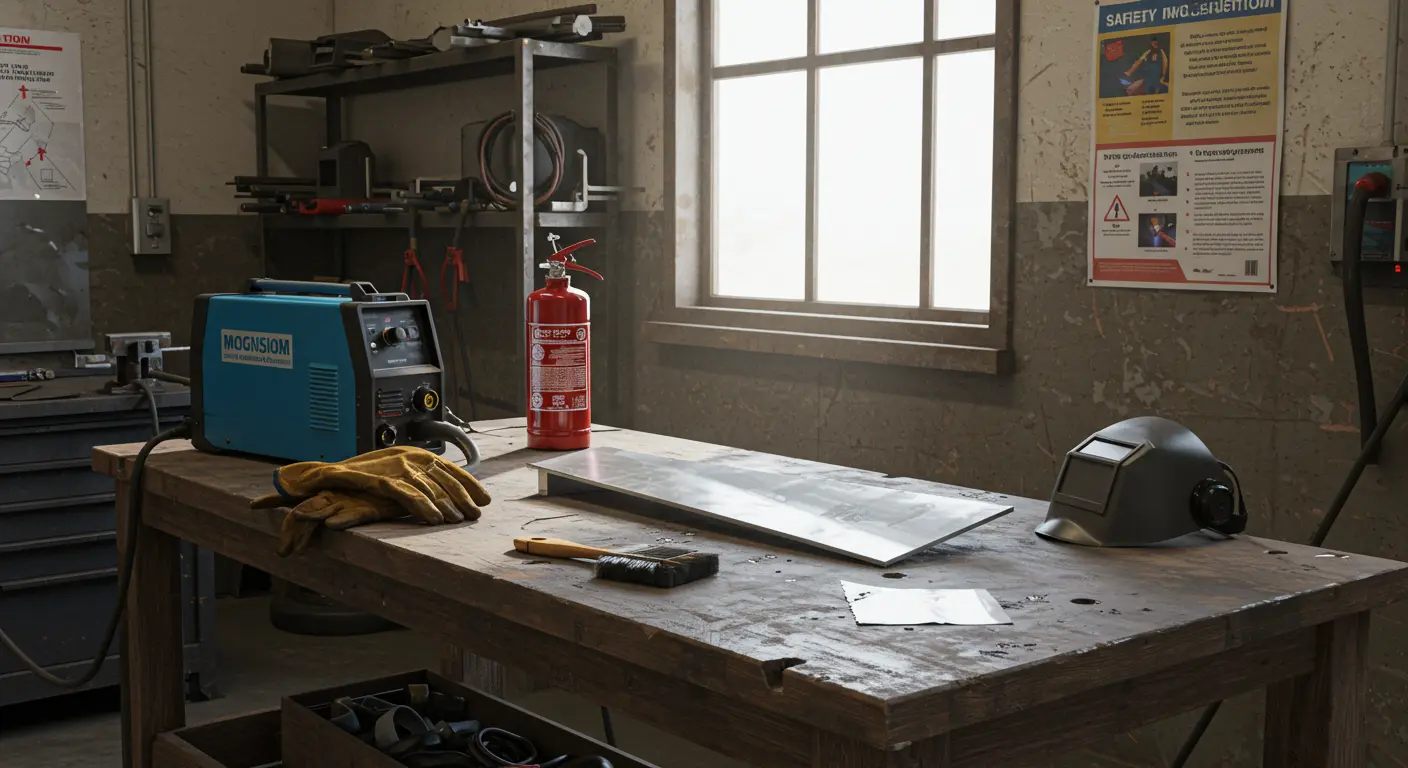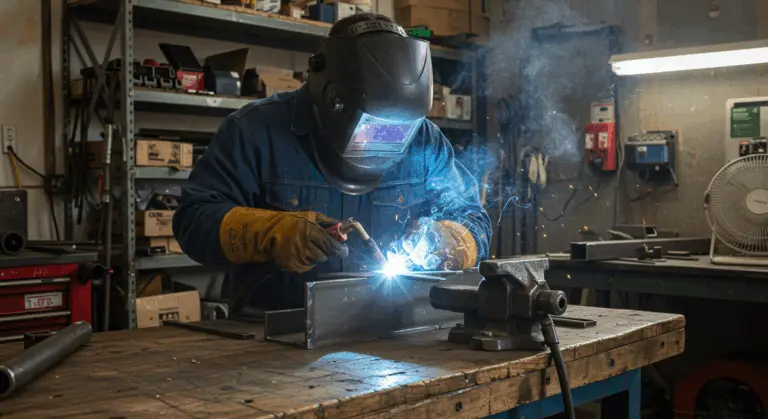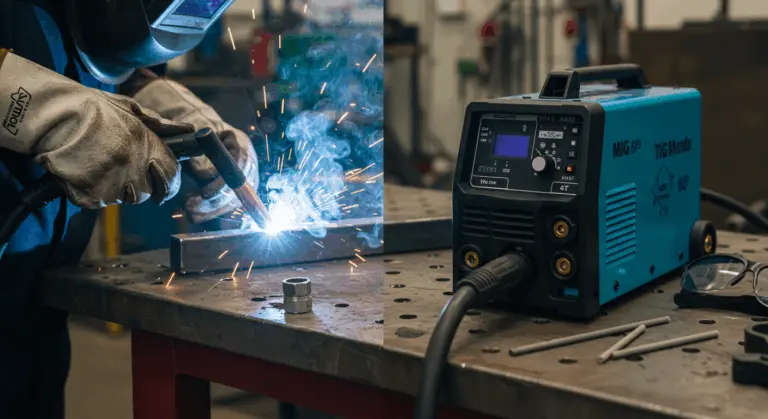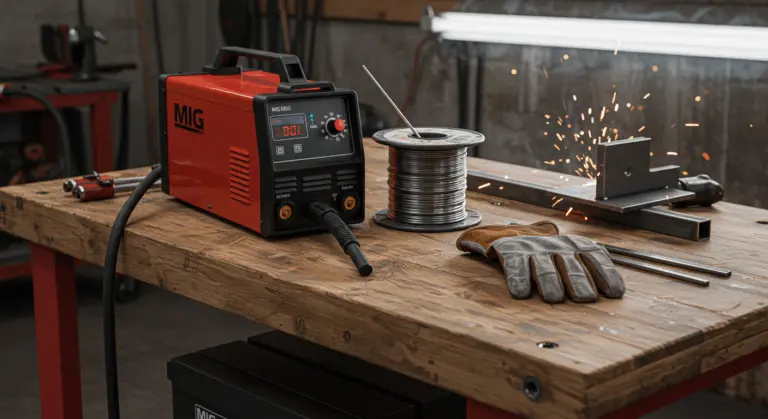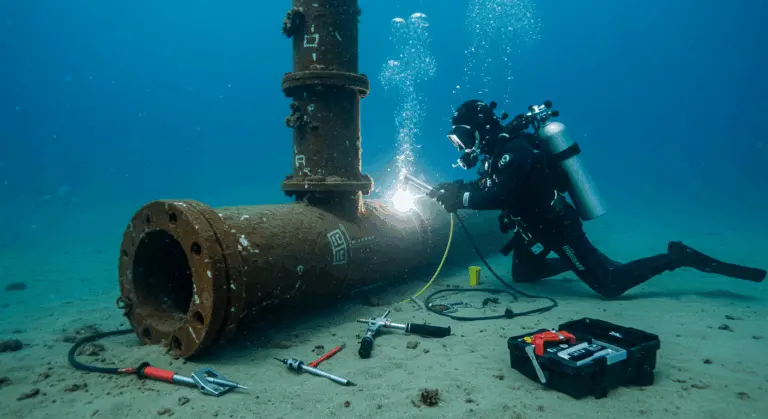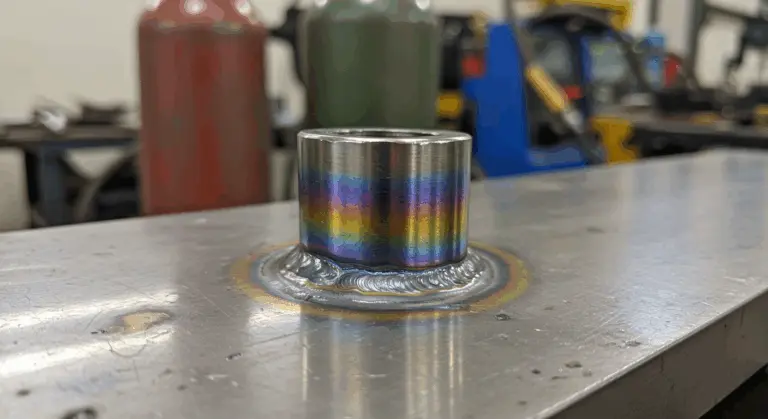Understanding Magnesium and Its Properties
Magnesium stands out in the world of metals for its remarkably light weight and impressive strength-to-weight ratio. This combination makes it highly sought after across industries where weight reduction is paramount—from aerospace components to automotive parts and portable electronics. At just two-thirds the density of aluminum, magnesium offers significant weight savings without compromising structural integrity.
Beyond its light weight, magnesium has several other noteworthy properties:
-
Corrosion Resistance: Good in certain environments, though its surface oxidizes rapidly when exposed to air.
-
Excellent Machinability: Easy to machine into precise shapes.
-
Electromagnetic Shielding: Provides effective shielding capabilities.
-
High Dimensional Stability: Resists warping and changes in shape.
However, magnesium’s remarkable benefits come with significant challenges. Its high reactivity—especially when exposed to oxygen or moisture—creates substantial safety concerns.
These distinctive properties make magnesium both incredibly useful and demanding to work with, especially when it comes to joining processes like welding. Understanding these fundamental characteristics is essential before attempting any welding operation with this reactive metal.
Challenges of Welding Magnesium
Welding magnesium presents much greater challenges than those found with conventional metals like steel or aluminum. First and foremost is magnesium’s low melting point (650°C/1202°F) combined with its excellent thermal conductivity. This combination creates a precarious balancing act during welding—the metal can rapidly transition from solid to liquid to vapor without meticulous temperature control.
Magnesium’s high reactivity poses another major challenge. When heated, it readily bonds with atmospheric oxygen, forming surface magnesium oxide.
Thermal expansion presents yet another complication—magnesium undergoes considerable dimensional changes when heated, often resulting in distortion and cracking during the cooling phase. The metal’s propensity to form porosity in welds further complicates matters, as trapped gases can weaken the joint structure.
Given these complexities, magnesium welding requires advanced skills and specialized knowledge to properly control both the weld puddle and arc behavior.
Safety Measures for Welding Magnesium
When welding magnesium, safety must be the absolute priority due to the metal’s high flammability and unique hazards. While substantial solid magnesium castings pose relatively lower ignition risks, the real danger comes from fine particles—magnesium shavings and grinding dust ignite with startling ease, burning intensely in ways that resist conventional extinguishing methods.
To ensure a safe welding environment, implement these essential safety measures:
-
Wear Proper PPE: Use flame-resistant clothing, leather gloves, a full-face shield, and a respirator to protect against fumes.
-
Ensure Excellent Ventilation: Use local exhaust ventilation or ensure strong general airflow to remove harmful fumes.
-
Maintain a Clean Workspace: Keep the area free of flammable materials and regularly sweep up all magnesium dust and shavings before welding.
-
Use Correct Fire Suppression: Keep a Class D fire extinguisher (for combustible metals) or dry sand nearby.Never use water or CO₂ extinguishers, as they will intensify a magnesium fire.
-
Supervise the Work: Never leave a project unattended and allow the material to cool completely before handling or storage.
Preparing Magnesium for Welding
Careful preparation of magnesium before welding is essential for both safety and weld integrity. The process begins with thorough cleaning of the workpiece to remove any contaminants that could compromise the weld or create safety hazards. Remove oil, grease, paint, and other surface contaminants using appropriate residue-free solvents. Avoid chlorinated solvents, as they can react with magnesium and cause corrosion.
Following chemical cleaning, mechanical preparation becomes essential. Remove the oxide layer from the weld area using stainless steel wire brushes or scrapers dedicated exclusively to magnesium work.
Joint design warrants thoughtful consideration before welding begins. Magnesium’s properties often require wider joint angles and larger root openings compared to other metals. For thicker sections, consider using a V-groove or U-groove joint preparation with a 60-90° included angle to ensure proper penetration.
Immediately before welding, conduct a final cleaning using a dry, lint-free cloth to eliminate any lingering particles. Never use water-based cleaners on magnesium, as they can react with the metal and produce hydrogen gas, creating both corrosion and potential fire hazards.
TIG Welding Magnesium: The Preferred Method
TIG welding (Tungsten Inert Gas)—also known as Gas Tungsten Arc Welding (GTA)—stands as the best method for welding magnesium. This process was originally developed specifically for welding magnesium during World War II, when it was known as celiac welding due to the use of helium as a shielding gas. Today, it continues to dominate as the technique of choice for superior magnesium welds.
TIG welding’s exceptional suitability for magnesium stems from its precise heat control and pristine welding environment. The process uses a non-consumable tungsten electrode to create the arc while the welder manually feeds filler rod into the weld pool as needed. This separation of heat source and filler material allows excellent weld puddle control—essential when managing magnesium’s low melting point and exceptional thermal conductivity.
For TIG welding magnesium, AC (alternating current) is overwhelmingly preferred over DC. The alternating current provides a crucial cleaning action during the electrode positive portion of the cycle, which helps break down the stubborn oxide layer on magnesium’s surface. Without this cleaning action, achieving proper fusion would be extremely difficult.
Pure argon typically serves as the recommended shielding gas for most magnesium welding applications. While helium or argon-helium mixtures can provide deeper penetration and faster travel speeds, pure argon offers better arc stability and is more economical for most applications.
The TIG process also provides excellent visibility of the weld puddle, allowing welders to respond immediately to changing conditions. This visibility, combined with the clean, spatter-free nature of TIG welding, makes it ideal for producing aesthetically pleasing welds on magnesium components where appearance matters.
Though TIG welding magnesium demands considerable skill and experience, it produces exceptional quality results for skilled welders. For critical applications in aerospace, automotive racing, or high-performance products, TIG welding excels at to produce strong, clean, and reliable magnesium welds.
Selecting Filler Metals for Magnesium Welding
Selecting the right filler metal is critical for successful magnesium welding. The general rule is to choose a filler alloy that closely matches the composition of the base metal being welded. This compatibility ensures optimal fusion, strength, and corrosion resistance in the finished joint.
| Filler Alloy | Primary Use / Base Metals | Key Characteristics |
|—|—|—|
| AZ92A | General purpose; common AZ (aluminum-zinc) series alloys. | Provides good strength and corrosion resistance. |
| EZ33A | Alloys with rare earth elements or thorium (EZ, HE series). | Maintains strength at high temperatures and improves creep resistance. |
| AZ101A | Aerospace and high-performance applications. | Offers maximum strength, ductility, and superior mechanical properties. |
Select the filler rod diameter based on the material thickness:
-
Under 3mm: 1.6mm (1/16″) rod
-
3mm – 6mm: 2.4mm (3/32″) rod
-
Over 6mm: 3.2mm (1/8″) rod or larger
Always maintain filler metals in dry storage conditions and clean them thoroughly before use. Even slight contamination can compromise weld quality when working with reactive metals like magnesium. Many seasoned welders routinely wipe filler rods with acetone immediately before welding, eliminating surface contaminants that might compromise weld integrity.
Post-Weld Considerations and Heat Treatment
Following magnesium weld completion, proper post-weld procedures are important for ensuring joint integrity and longevity. Unlike some other metals, magnesium welds often require specific attention to prevent issues like stress corrosion cracking and to restore the material’s original properties.
Post-weld heat treatment (PWHT) for magnesium involves carefully reheating welded components to temperatures below their lower critical transformation point, maintaining these temperatures for specified durations. This controlled process helps relieve internal stresses created during welding, which is particularly important for magnesium due to its high thermal expansion coefficient.
Most magnesium alloys require stress relief heat treatment involving heating to 150-300°C (300-570°F) for 1–2 hours, followed by gradual cooling. The exact temperature and duration depend on the specific alloy composition and the component’s size and complexity. This treatment significantly reduces the risk of stress corrosion cracking, which magnesium alloys can be susceptible to when residual stresses remain in the material.
Although magnesium typically retains good corrosion resistance after welding—unlike stainless steels requiring PWHT for corrosion resistance restoration—thermal treatments may still prove necessary for precipitation hardening in specific alloys. This process can restore strength properties that might have been altered in the heat-affected zone during welding.
Beyond heat treatment, mechanical finishing of magnesium welds demands careful attention. Any grinding or machining must be done with extreme caution due to the flammability of magnesium dust. Use tools specifically designated for magnesium work, maintain low cutting speeds to prevent overheating, and ensure proper dust collection systems are in place.
Finally, protective coatings—including chromate conversion coatings, anodizing, or specialized paints—can significantly extend welded component service life, especially in corrosive environments.
Conclusion: Is Welding Magnesium Feasible?
Yes, welding magnesium is entirely feasible—but it’s anything but simple. As we’ve explored throughout this article, successful magnesium welding requires specialized knowledge, proper equipment, meticulous preparation, and strict adherence to safety protocols. This isn’t a material for welding novices or casual DIY projects.
TIG welding remains the preferred method for magnesium welding, providing the precise control and clean environment needed for superior results. The process allows experienced welders to create strong, aesthetically pleasing joints in this reactive metal. Alternative methods like laser welding and friction stir welding also show promise for specific applications, particularly in industrial settings where automation is possible.
The challenges are significant: high reactivity, low melting point, rapid oxidation, and considerable fire risk. Yet these obstacles become manageable with proper approach and expertise.
Those considering magnesium welding projects should honestly assess their skills. Complex or critical applications involving magnesium are best left to certified professionals with specific experience in this material. The consequences of improper magnesium welding can range from weak joints to dangerous fire hazards.
As lightweight materials gain increasing importance across industries pursuing efficiency and performance gains, demand for skilled magnesium welders will probably increase. For welding professionals looking to expand their capabilities, learning to work with magnesium offers a valuable specialization in modern manufacturing.

